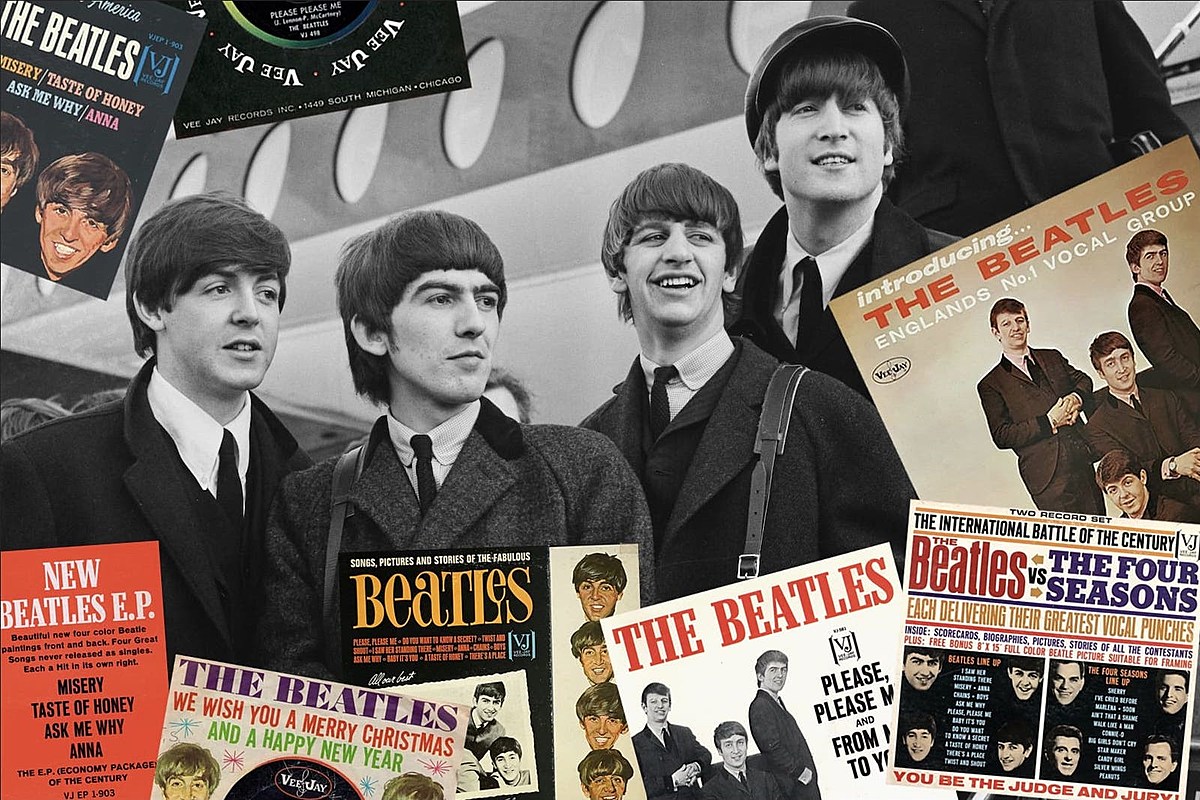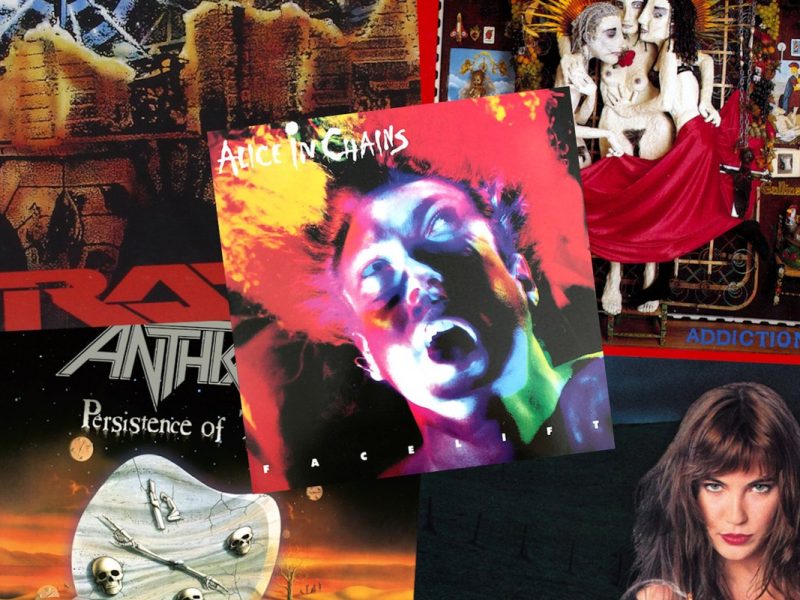A popular nighttime DJ in Chicago first played the Beatles in February 1963, spinning a single version of “Please Please Me” that wasn’t released through EMI, Parlophone or Capitol Records.
Instead, it was tiny Vee-Jay Records, a Black-owned label from Chicago’s South Side founded by Vivian Carter and Jimmy Bracken. The Beatles were already surging in popularity back in their native England. Without Vee-Jay, however, they might never have broken in America. Capitol Records, EMI’s American subsidiary, had initially turned them down.
Carter was also a radio personality and hosted a well-regarded gospel program in her Indiana hometown. She married Bracken, an entrepreneurial dreamer, four years before John Lennon and Paul McCartney first met in 1957. They started Vee-Jay, named after the first letters of their first names, with a $500 loan from a local pawnbroker. The first signed act was a doo-wop group, the Spaniels. Their debut single, “Baby It’s You,” shot to No. 10 on the Billboard R&B chart, then the follow-up “Goodnite, Sweetheart, Goodnite” rose to No. 5. Vee-Jay was on its way.
They hired Ewart Abner as general manager. He’d later serve as label president at Vee-Jay before rising to the same position at Motown, Vee-Jay’s successor as the most successful Black-operated record company. Previous experience at Chicago’s Chance label had given Abner a wealth of insight into getting records made – and played.
He personally delivered “Please Please Me” to that Chicago DJ. “[Abner] came up, and he was bringing his latest releases,” Dick Biondi later told NPR. “And he handed me one, and he said, ‘Dick, listen to this. This is a group from England. You might like it.’ I listened and I played it that night, and it was on.”
Vivian Carter’s younger sibling Calvin became Vee-Jay’s fourth core team member, serving as producer. Together, they signed, produced and marketed soul pioneer Jerry Butler, gospel crossover legends the Staple Singers, and blues stars John Lee Hooker and Jimmy Reed. Gene Chandler’s Vee-Jay single “Duke of Earl” soared to No. 1.
They get less credit for taking a chance on the Beatles.
Listen to the Version of ‘Love Me Do’ Released by Vee-Jay
Vee-Jay had slowly been signing white artists, and they already comprised some 30% of its roster in 1961. The Four Seasons scored a pair of chart-toppers for the label a year later. “If we want to stay in business,” Abner told Ebony magazine back then, “we’ve got to stop thinking of ourselves as just a Negro company.”
Then Abner got a call from Vee-Jay attorney Paul Marshall, whose other clients included Transglobal, EMI’s licensing representative in the U.S. Abner recalled that Marshall “said, ‘Ab, this group, they’re going to be bigger than bubblegum.’ Says, ‘They’re already happening in Liverpool and in England. Capitol’s got a right to them because Capitol is owned by EMI. Capitol doesn’t want to exercise their right. We can get ’em.’ I said, ‘Let’s get ’em!'”
The original contract granted Vee-Jay Records the right of first refusal on the distribution of Beatles records in the U.S. for the next five years – meaning Sgt. Pepper’s Lonely Hearts Club Band may have been issued with Vee-Jay’s familiar rainbow-ringed label.
They were already huge in England, but “Please Please Me” failed to break the Beatles in the U.S. – despite Biondi’s best efforts. (He was also an early fan of Vee-Jay’s next Beatles single, “From Me to You.”) But Capitol Records began to have second thoughts anyway, especially when Vee-Jay dragged its heels on releasing the Beatles’ debut album.
The masters had been dutifully handed over since Vee-Jay had exclusive rights to release this material under the licensing agreement with Transglobal. But weeks turned into months, and the album never arrived. Vee-Jay ended up releasing the very first Beatles album in America, a multimillion-seller called Introducing … the Beatles – but not until Jan. 10, 1964, just 10 days before Capitol Records issued Meet the Beatles.
Introducing … the Beatles boasted a track listing that mirrored their U.K. debut, minus “Please Please Me” and “Ask Me Why.” It’s easy to see why Vee-Jay believed in their crossover appeal since half of the remaining songs were covers of songs made popular by Black acts – including “Twist and Shout,” which had recently hit for the Isley Brothers. Vee-Jay released the Beatles version, pairing it with Lennon’s Motown-influenced “There’s a Place” and scored a No. 2 hit.
Both albums sold well, though Capitol’s kept Vee-Jay out of the top spot. Meet the Beatles was No. 1 for 11 weeks while Introducing … the Beatles cooled its heels at No. 2 for nine. Unfortunately, Vee-Jay was having trouble keeping up. Cash flow problems had caused delays in pressing the album, while worries about being undercapitalized and rumors of money mismanagement led to Abner’s departure.
Watch a News Report on Vee-Jay’s Rise and Fall
Transglobal ended up terminating Vee-Jay’s contract over failure to pay royalties. Capitol then sued Vee-Jay, asserting prior distribution rights. Injunctions came and went, as Vee-Jay sporadically produced Beatles records. At one point, employees were reportedly staying home from the office in order to avoid being served legal papers from Capitol.
The two sides ultimately reached a settlement agreement in early 1964, and Vee-Jay was given the right to sell its previously released records until that October, when all the songs would revert to Capitol. Carter and Bracken were also given clearance to issue “Love Me Do” and “P.S. I Love You,” and the single promptly soared to the top of the charts.
Vee-Jay then got busy repackaging the material they had before time ran out. Songs, Pictures and Stories of the Fabulous Beatles arrived in July 1964, followed by The Beatles vs. the Four Seasons in August. By May 1966, however, Vee-Jay was out of business. Just three years had elapsed since the Beatles’ passed-over masters arrived at their doorstep.
Despite everything, they were groundbreaking until the end: One of Vee-Jay’s last singles found Little Richard singing “I Don’t Know What You’ve Got, but It’s Got Me” with a then-unknown guitarist named Jimi Hendrix. Millions of counterfeit versions of Introducing … the Beatles were later sold in drug and department stores, reportedly produced in part by an unscrupulous former Vee-Jay employee. As a result, the Beatles’ original Vee-Jay recordings became a holy grail of sorts for fans.
“Those are collector’s items now – they are,” Vee-Jay’s former international director Barbara Proctor told Chicago’s WLS-TV in 1995. “And we’re just as proud as punch, because it really made all the difference in the world, to have that impetus and a start right here in America on our own little Chicago label.”
Some intriguing anomalies also make these records collectible. Their first single identifies the band as the “Beattles.” U.S. buyers got the early version of “Love Me Do” with sessions player Andy White on drums, since Vee-Jay used masters from Please Please Me. (Ringo Starr replaced him on the stand-alone U.K. single.)
The cover image from Introducing … the Beatles, taken on the same day as the photo for Please Please Me, was reversed – meaning everyone’s hair is parted in the wrong direction. (Anniversary reissues of “Love Me Do” subsequently flipped the image back to its correct position.) McCartney’s memorable album-opening count-in is also clumsily edited, so he simply says, “Faaah!”
New iterations of Vee-Jay Records came and perhaps inevitably went before their catalog – minus the Beatles songs – was purchased by Concord in 2014.
The Best Song From Every Beatles Album
Consensus can be difficult to reach on which Beatles album is best – much less which song.
See the Beatles in Rock’s Craziest Conspiracy Theories



